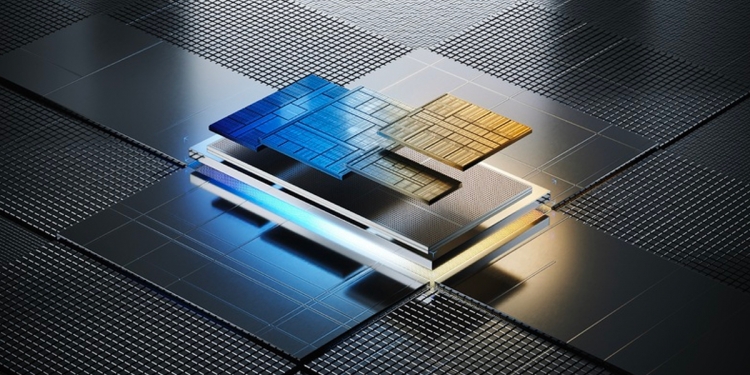At Intel’s AI Everywhere event, the blue giant has finally unveiled their next generation of mobile processors. These mark a milestone for Intel as they are the first to use their new tile-based Meteor Lake architecture, as well as the first to use the new Intel Core Ultra naming scheme.
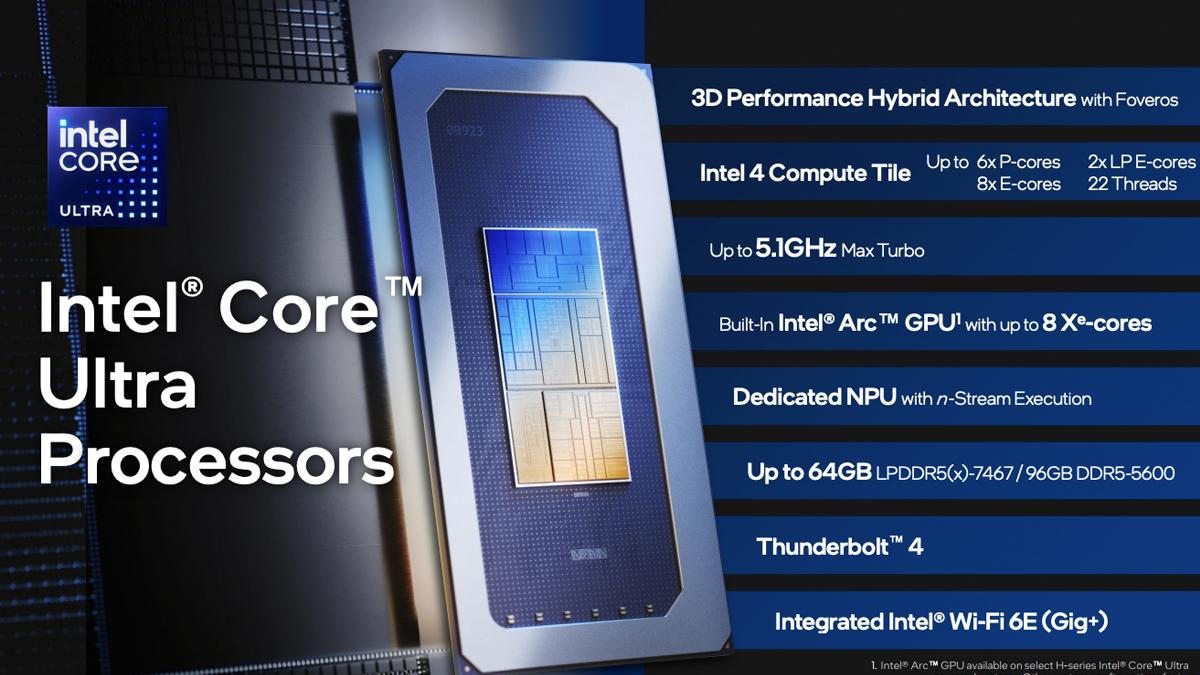
Starting with the H-series chips, Intel is releasing five new members of the 14th generation H-series mobile processors, with two Intel Core Ultra 5 SKUs and two Intel Core Ultra 7 SKUs made available already and an Intel Core Ultra 9 set to arrive early next year. Meanwhile, for the lower power U-series, two Intel Core Ultra 5 and two Intel Core Ultra 7 SKUs are now available with two more variants coming next year.
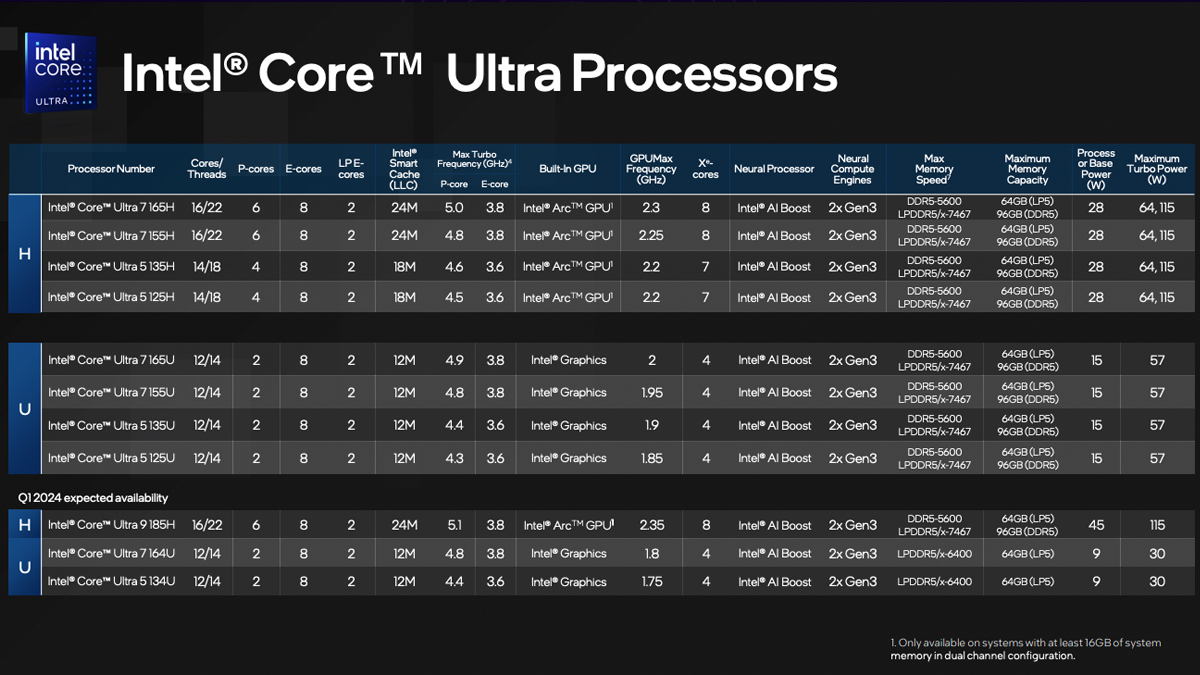
With the Intel Core Ultra H-series, they offer up to 16 cores and 22 threads, with eight efficiency cores and two more low power efficiency cores as standard across the range; the key difference between each processor stems from the number of performance cores and their clock speeds. Furthermore, they all come with Intel Arc GPU integrated graphics, making the step up from the old Intel Xe integrated graphics from their previous mobile processors. They also come with a new Intel AI Boost NPU to power any AI-related workloads on your laptop, and support both DDR5 and LPDDR5 memory.
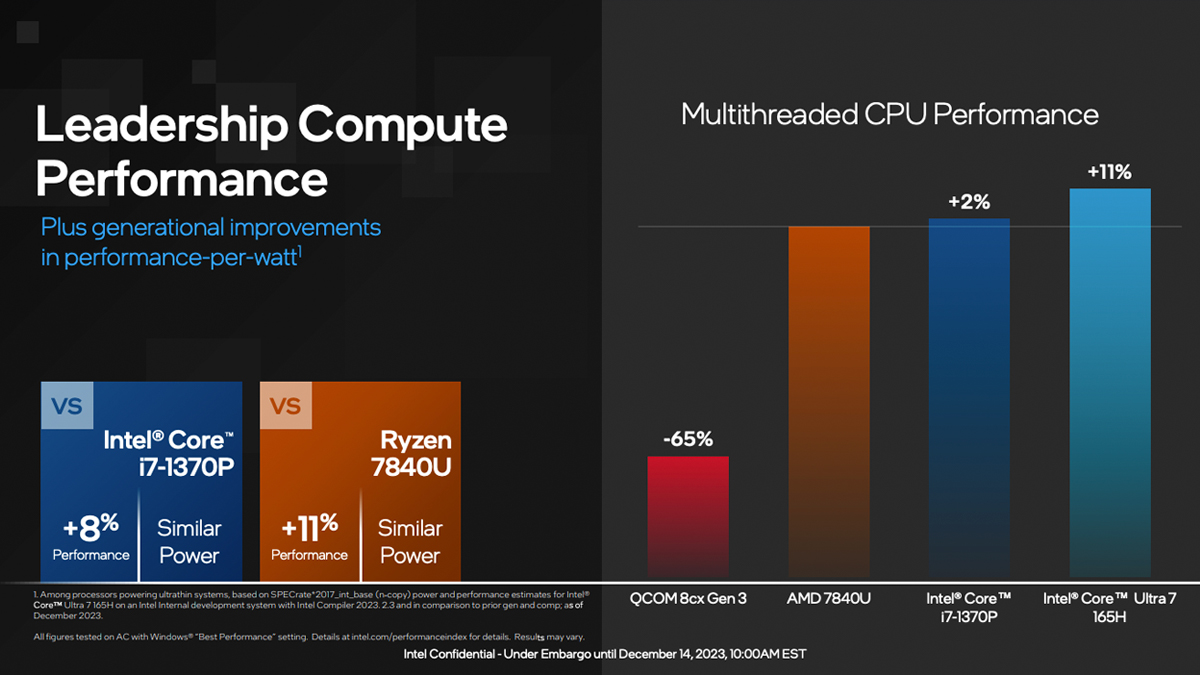
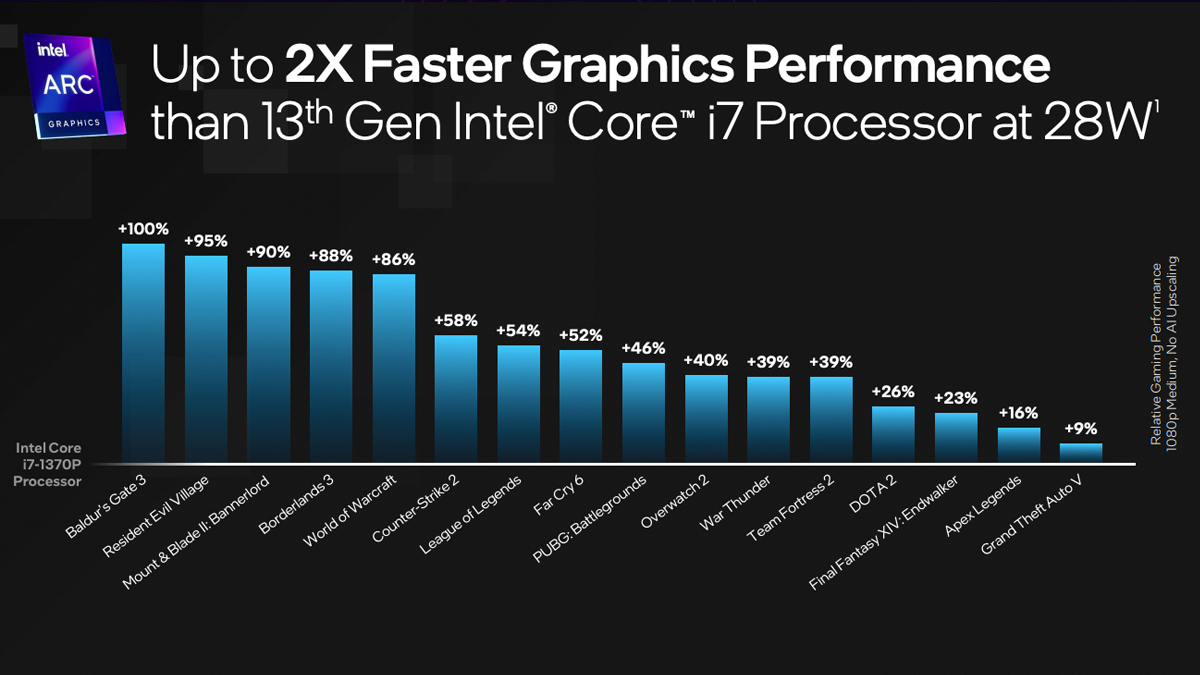
As for the Intel Core Ultra U-series, these lower power chips meant for thin and light devices will all come with 12 cores and 14 threads as standard across the range, with differences boiling down to clock speeds as well as the max iGPU frequency. Speaking of their integrated graphics, these U-series chips also lose out on the Intel Arc GPU cores, instead sticking with the older Intel Xe graphics. The four current Intel Core Ultra U-series chips will support DDR5 and LPDDR5 memory, while the two upcoming SKUs will use only support the latter. All of them also come with the Intel AI Boost NPU for AI-related tasks.
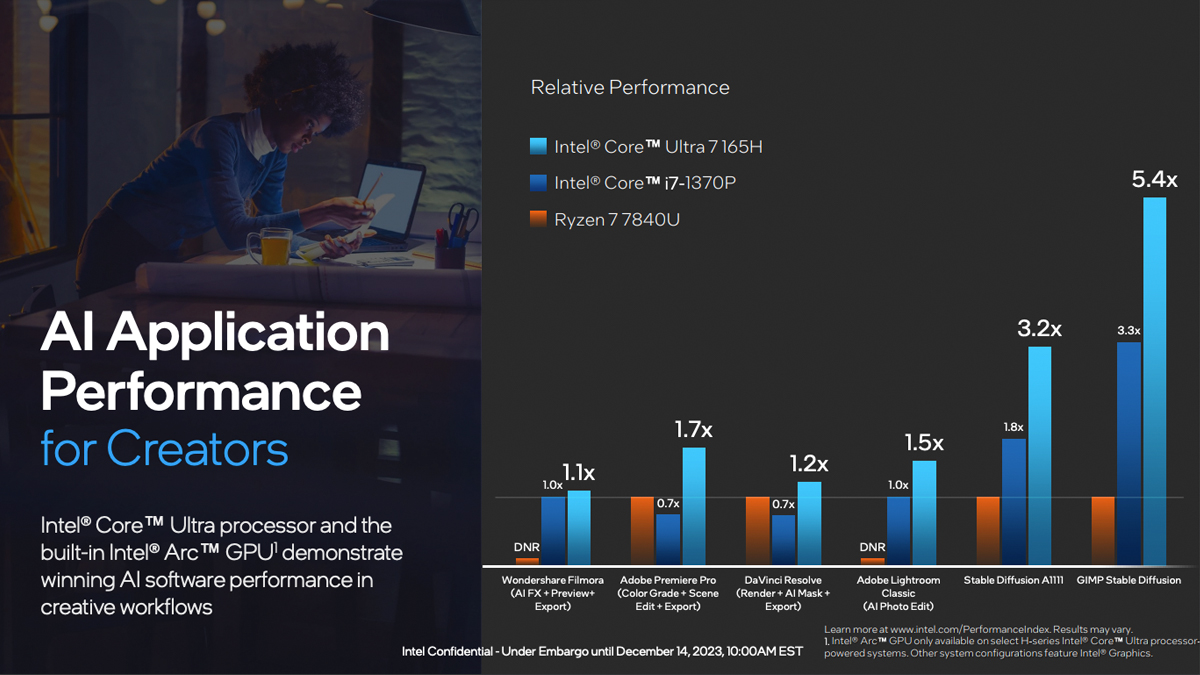
One notable lineup missing here are the P-series chips that was on the previous generations of Intel mobile processors. It seems that with Meteor Lake, Intel is merging the old 28W P-series chips with the formerly 45W H-series chips into one. The new H-series chips now have a processor base power of 28W, barring the Intel Core Ultra 185H that remains at 45W. The Meteor Lake H-series chips will also be able to boost to up to 115W or 64W, with manufacturers able to tweak the power based on the cooling capabilities on a per-device basis. U-series chips meanwhile remain at a 15W base power, with the two upcoming SKUs able to drop down to 9W.
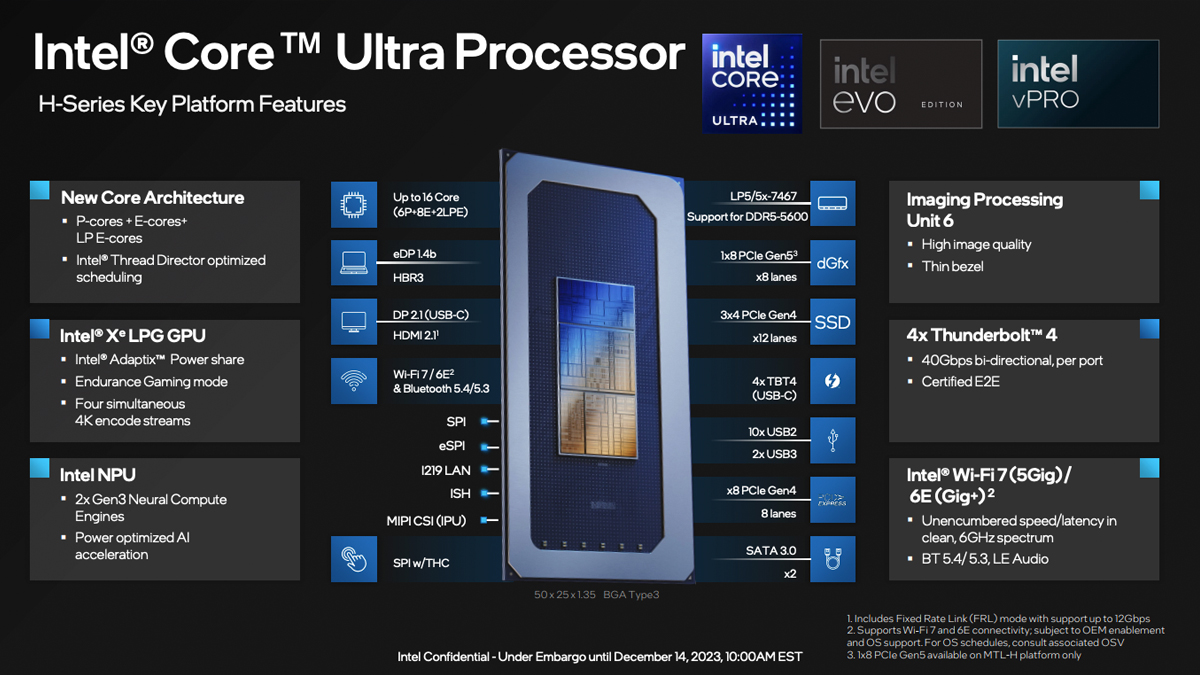
Built on the Intel 4 process with Foveros 3D advanced packing, Intel is making some big changes with Meteor Lake. As a quick recap, these Meteor Lake chips are all made out of ’tiles’, with a compute tile, an SOC tile, a graphics tile and an IO tile.

The compute tile is where the main CPU cores are located, housing the new Redwood Cove P-cores and Crestmont E-cores. The SOC tile meanwhile has another two ‘low power’ E-cores, primarily used for workloads that don’t need the full power of a regular CPU core for better power efficiency. It’s also here where the memory controller and new NPU is located, as well as providing wireless connectivity.
On the GPU tile is where—on the H-series chips at least—you’ll find the Intel Xe-LPG graphics cores, while the U-series chips will have to make do with the older cut down Iris Xe graphics instead. As for the I/O tile, it takes care of connectivity and supports things like Thunderbolt 4 and PCIe Gen 5.

